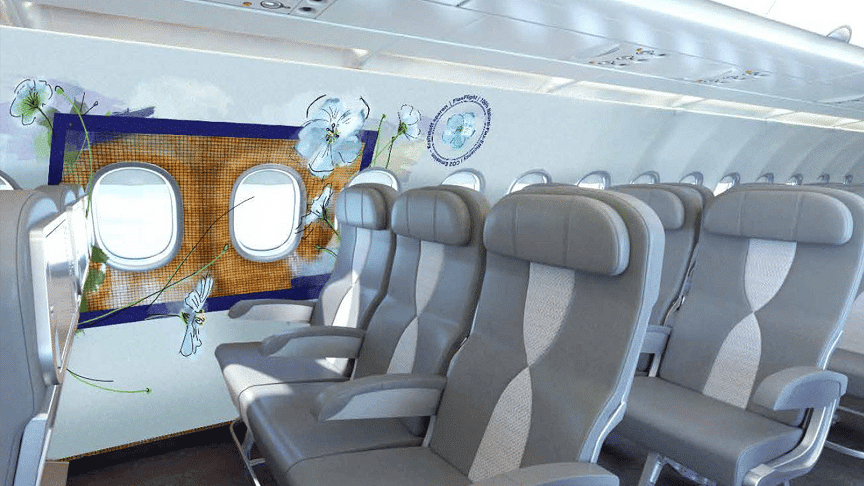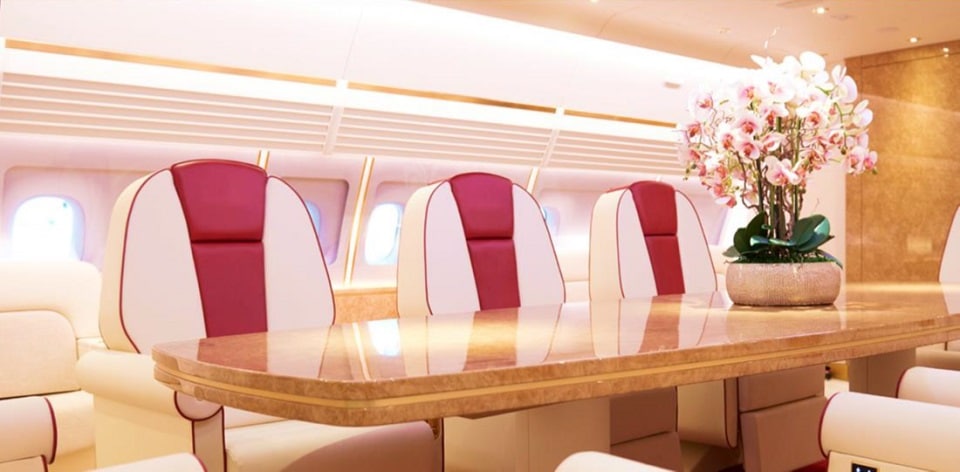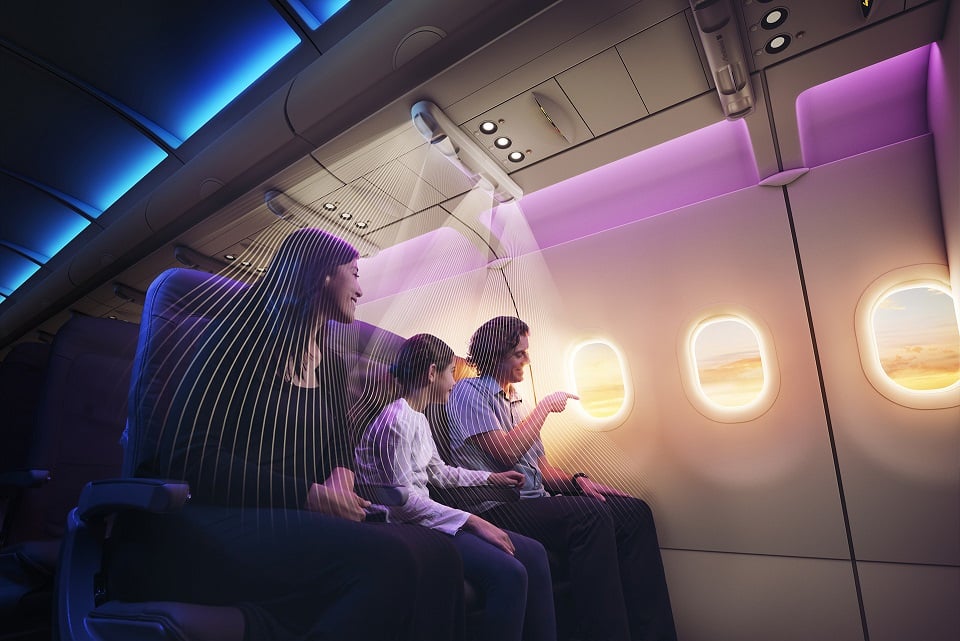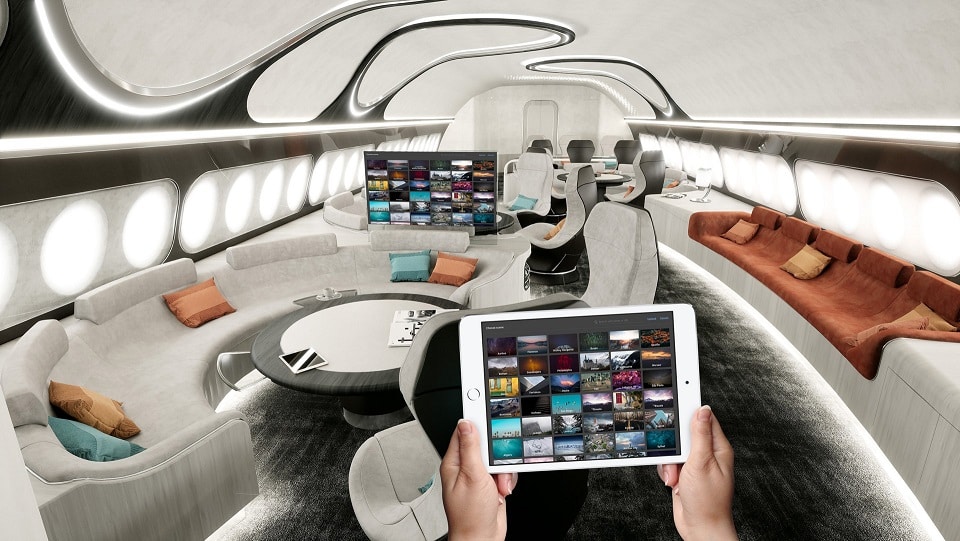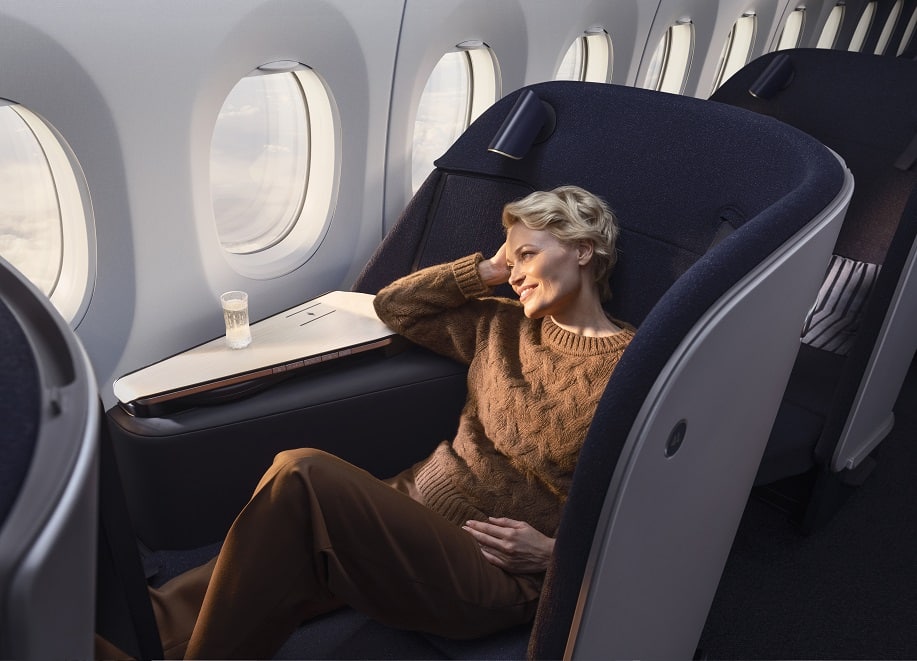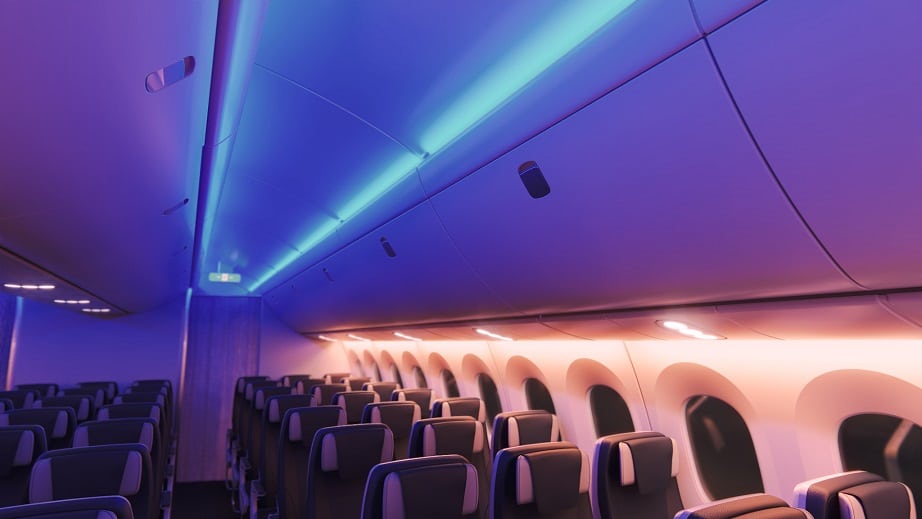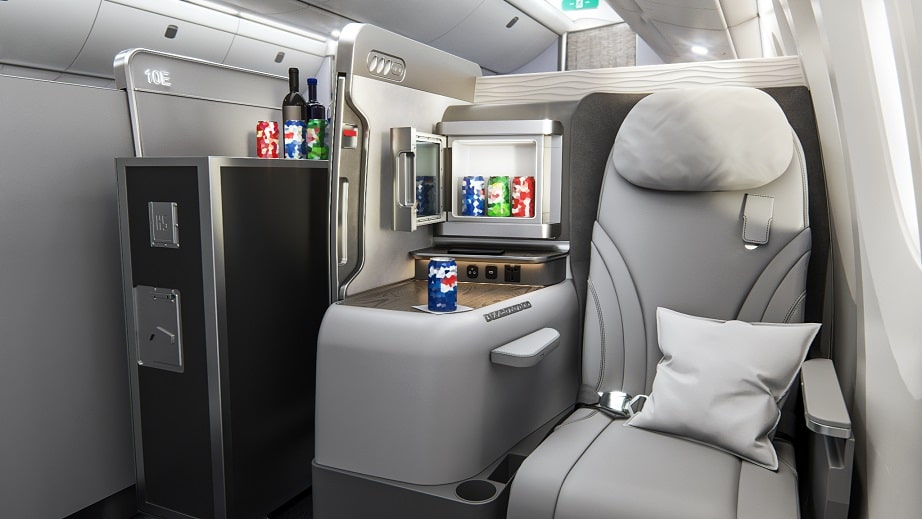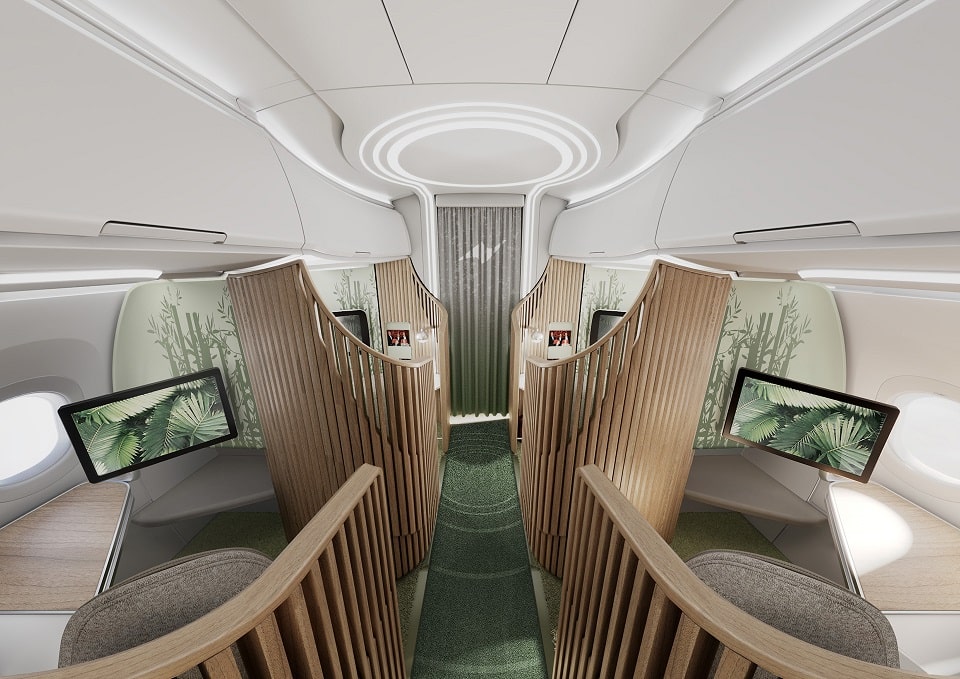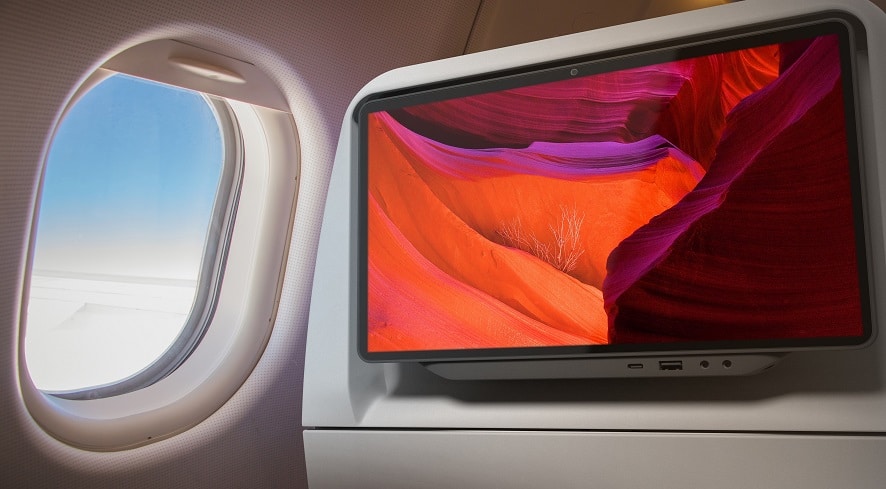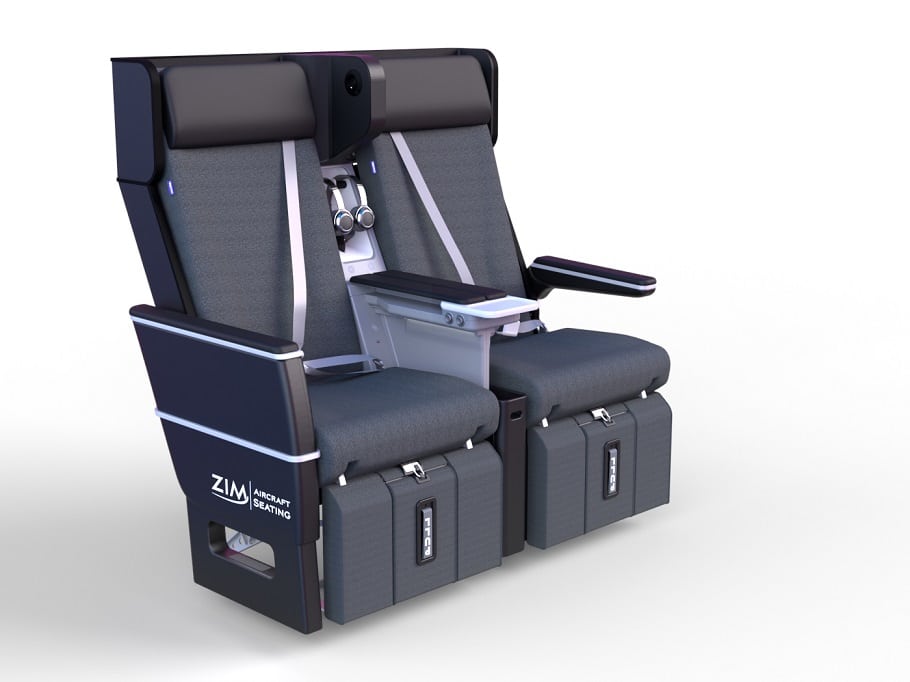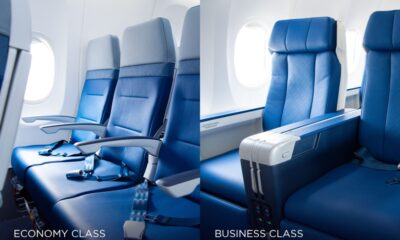Aerospace
Futuristic aircraft seats that were nominated for Crystal Cabin Awards in 2022
10 New Conceptual Airplane Seats at Aircraft Interiors 2022.

1.Lufthansa Technik AG
With AeroFLAX, Lufthansa Technik has developed the first renewable, eco-efficient, and airworthy prepare for aviation. The unique combination of flax fibers and a bio-based resin system allows for a revolutionary optimization of the component weight by up to 20% and additional CO2e savings over the entire lifecycle of the component.
Lufthansa Technik’s unique and patented repair solution offers a sustainable and cost-saving way to renew any VIP cabin. By repairing inside the cabin, this solution is up to eight times cheaper and up to nine times faster than conventional methods. With a wide range of cabin surface materials and imitation surface patterns, our experts can refresh cabins during routine maintenance or short ground times. The idea behind it: instead of replacing cabin furniture, it is renewed sustainably with minimal use of materials. The combination of traditional craftsmanship and advanced technology makes cabin refurbishment unique. The approved method can be applied to any cabin without the need for qualification.
2. Pexco Aerospace
AirShield is a cabin-air wellbeing device that re-purposes the airflow from existing overhead air vents to create protective air barriers around and in-between each passenger in an airplane cabin. The patent-pending device works alongside existing cabin airflow infrastructure. It has been proven to reduce sharing of exhaled particles between passengers by 76% while increasing the droplets purged from the cabin by 230%. A practical solution that is easy to install and retrofit, proven effective, and passenger preferred, AirShield is available from Pexco Aerospace and is targeted to be FAA certified for flight in Q2 2022.
Boeing found a new solution for Aircraft Maintenance. How does it
3.Airbus Corporate Jets
Airbus Corporate Jets (ACJ) and Latécoère Interconnection Systems (LIS) have co-developed a new and unique In-Flight Entertainment (IFE) technology – “The ACJ Smart LiFi Monitor” aiming to bring the on-ground experience to the sky. This all in one display integrates all the main features of current state of the art IFE systems while being designed to be an easy plug and play solution and is ready for all the new future cabin generations.
4.Collins Aerospace air lounge
The AirLounge is not a traditional aircraft seat but takes inspiration from lounge furniture. The seat is designed to maximize comfort, space, and freedom to move during a long-haul flight. The clean lines and the dark, comforting colour scheme follow Finnair’s Nordic design style that is visible also in Finnair’s lounges in the non-Schengen area at Helsinki Airport.
The newly updated B737-800 NG aircraft of Malaysia Airlines is
5.Collins Aerospace Hypergamut
Collins Aerospace launched its Hypergamut™ Lighting System at the Aircraft Interiors Exposition in Hamburg, Germany. The advanced full-cabin lighting system is attuned to human biology to reduce passenger jetlag, color-optimized to improve the appearance of materials, food and fixtures throughout the cabin and autotomized to intelligently sync with real-time flight data to enable predictive and independent functionality. A first of its kind solution for aircraft interiors, the Hypergamut Lighting System is a finalist in the Health and Safety category of the Crystal Cabin Awards and scheduled for entry into service in early 2024.
6.Collins Aerospace spacechiller
Collins Aerospace has introduced SpaceChiller™, a modular thermoelectric cooling system scalable to fit a variety of applications throughout an aircraft’s interior. Introduced at the Aircraft Interiors Exposition in Hamburg, Germany, SpaceChiller quietly and efficiently chills compartments to food-safe temperatures without the use of refrigerants that may impact global warming.
With applications ranging from premium suites and passenger social zones to single galley inserts and whole cart bays, airlines benefit from flexibility in service, storage and space without sacrificing room for passengers and flight attendants.
7. Flying disabled
Power Wheelchair users are the most vulnerable passengers that fly. These numbers have increased over the decades, yet the aircraft cabin has not changed or adapted for this rising demographic. It is with the emphasis passenger safety that solutions must urgently be established and implemented. Once a solution has been applied, confidence will soar and the numbers flying will increase. Globally the disability market has a disposable income of over $13 Trillion. A market the Airline industry has yet to actively permeate.
8.Teague and NORDAM
Teague and NORDAM have created a cabin that offers passengers more personal space, privacy, and comfort in a home-like interior – without compromising existing passenger numbers. Single-aisle aircrafts are increasingly being used for long-haul flights. As more of these aircraft enter service, the onboard passenger experience is in direct competition with twin-aisle aircraft that fly the same routes. Passengers may feel the premium experience in a narrowbody cabin does not meet or exceed the standard of a widebody – owing to the reduced cabin footprint, seat pitch and constrained cabin architecture.
9.Thales avionics Optiq
Thales’s latest evolution of industry leading inflight entertainment (IFE) solutions. The system features a line of 4K HDR displays, dynamic power supply solutions, personalization and airline revenue generation capabilities. Optiq by Thales is the industry’s first line of intelligent 4K high dynamic range (HDR) displays enhanced with Samsung QLED proprietary technology. The new in-seat and cabin displays have a sleek passenger centric design focused on ergonomics and fits seamlessly into the modern cabin environment. Optiq provides passengers with the best experience in the air, with an unrivaled picture quality featuring more than one billion colors.
10. ZIM aircraft
The ZIMprivacy seat increases passenger comfort while also prioritizing privacy, giving more living space and a heightened sense of personal enclosure. The fixed seat back houses a special recline system offering the passenger several different body positions. Its fully mechanical assembly is easier to maintain than comparable electrically powered systems.

Aerospace
Which is bigger 777x or 787 aircraft ?

The 777X is a new series of the Boeing 777 family and is designed to be larger and more efficient than its predecessor. It features two variants: the 777-8 and the 777-9, being the larger of the two.
The Boeing 777X emerges as the larger sibling within the Boeing family, representing a significant leap forward in both size and efficiency. Comprising two variants, the 777-8 and the 777-9, the latter takes the crown as the larger of the two. With its expansive fuselage and impressive wingspan, the 777X is tailored for long-range journeys and boasts a substantial passenger capacity.
On the other hand, the Boeing 787, affectionately known as the Dreamliner, occupies a niche in the market as a smaller yet formidable aircraft designed for medium to long-range flights. Its distinguishing feature lies in its composite fuselage, a technological marvel that renders it lighter and more fuel-efficient compared to conventional aluminum counterparts. The Boeing 777X is larger than the Boeing 787 aircraft.
When it comes to passenger capacity, the 777-9 reigns supreme, typically accommodating a sizeable contingent of 400-425 passengers in its standard configuration. In contrast, the 787, with its more modest dimensions, typically carries between 240-290 passengers, depending on the variant and layout.
One of the remarkable innovations introduced with the 777X is its folding wingtips, a feature designed to address the logistical challenges of accommodating such a large aircraft in conventional airport gates. These folding wingtips enable the 777X to retract its wings, allowing it to fit into gates designed for smaller aircraft while still reaping the benefits of an extended wingspan during flight, thereby enhancing fuel efficiency and operational flexibility
Aerospace
China Secures Production Certificate for Mass Production of Pilotless eVTOL Aircraft

The first passenger-carrying pilotless electric vertical takeoff and landing (eVTOL) aircraft in the world, the EH216-S, has received the Production Certificate for its eVTOL aircraft from the Civil Aviation Administration of China (CAAC).
This is a significant milestone for EHang Holdings Limited, the leading UAM technology platform company in the world. This outstanding accomplishment is another big step towards mass manufacturing for the eVTOL aircraft and the ensuing commercial operations, building on the ground-breaking acquisition of the Type Certificate and the Standard Airworthiness Certificate for the EH216-S.
The PC is a crucial certificate that the aircraft maker receives from the CAAC, the country’s aviation authority. By obtaining this certificate, EHang has demonstrated that it has set up a quality management system for mass production that satisfies the airworthiness regulation standards set forth by the CAAC, and the company has been given permission to continue producing mass quantities.
It is also a strong guarantee of the calibre of the goods made by EHang. Raw materials, supplier management, manufacturing organisation, production quality control, aircraft pre-delivery test, after-sales repair and maintenance, etc. are all included in the mass production quality management system for the EH216-S.
To ensure that every aircraft and its components that roll off the production line strictly adhere to the approved type design and safety requirements, the system sets clear guidelines and documentation for every step in the production procedure. This ensures comprehensive traceability and safety control.
Aerospace
Four Airbus A380 Superjumbos lined up to be scrapped

In a strategic move aimed at reclaiming valuable resources from the iconic Airbus A380 aircraft, VAS Aero Services and Dr. Peters Group have announced a significant collaboration.
This partnership marks a milestone in aviation logistics and aftermarket services, with four of these colossal planes slated for teardown and redistribution of used serviceable material (USM).
The venture between VAS Aero Services, renowned for its expertise in aircraft dismantlement, and Dr. Peters Group, a prominent Germany-based investment fund management firm, underscores a commitment to sustainable aviation practices. This isn’t their first foray into scrapping A380s; their successful partnership has already seen the dismantlement of these aircraft, making them pioneers in this niche.
Under the agreement, the latest consignment brings the tally to eight A380s entrusted to VAS by Dr. Peters Group. Managing Director Christian Mailly of Dr. Peters Group emphasized the trust placed in VAS, citing their unparalleled capabilities in dismantlement and aftermarket sales network. It’s a strategic move in response to the growing demand for quality USM parts, particularly with the resurgence in reliance on the A380.
Notably, the teardown process will be carried out at various locations, optimizing the positioning of harvested parts to cater to different markets. While some parts will be positioned in Europe to support operators in the region and the Middle East, others will remain in the Asia-Pacific region. This meticulous strategy ensures efficient access to spare parts, benefiting MROs and airlines across these markets.
The decision to retire these A380s comes at a time when operators are reassessing fleet strategies amidst evolving market dynamics. Despite initial plans for quick retirement due to the emergence of more fuel-efficient alternatives, factors such as a rebound in long-haul demand and delays in new widebody deliveries have prompted operators to reconsider. The A380, with its unique capacity and capabilities, presents a practical solution for short-term capacity management.

